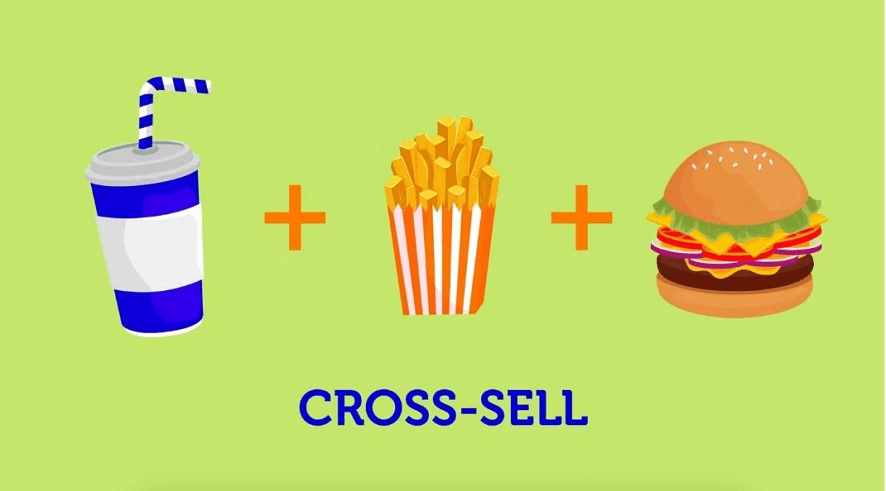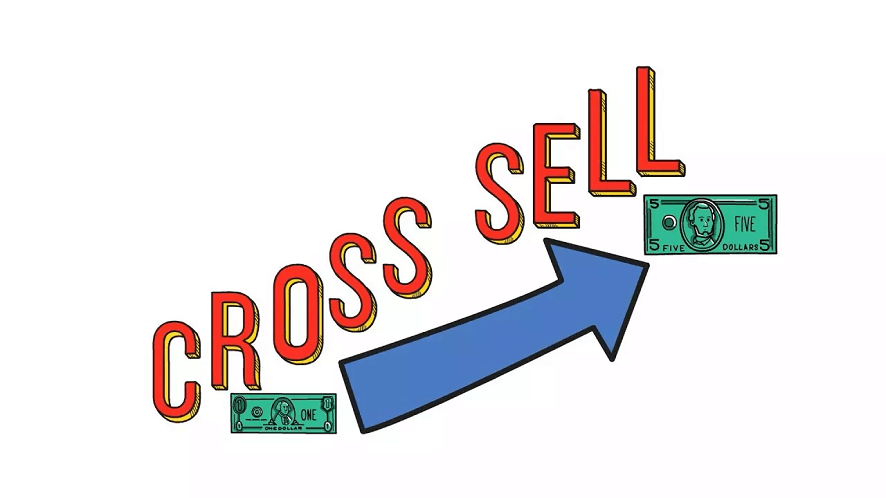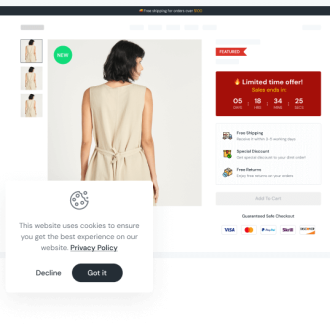Cross-selling is known as an effective sales strategy that helps businesses increase revenue quickly. According to statistics on Forbes, up to 59% of customers are willing to pay more to experience products and services that are applied to the cross-selling method. So what is cross-selling? And how to cross-sell? Scroll down to this article and learn more.
What is Cross-selling?

Cross-selling is a sales strategy in which a corporation advises or offers additional items or services to a consumer who has already purchased or indicated an interest in a certain item.
It entails recommending items that are complementary or linked to the customer’s needs and preferences.
For example: When you book a hotel room, you will be introduced by the staff to the entertainment, dining, and spa services available at that hotel. Similarly, if you buy a laptop, it may be cross-sold with accessories such as a laptop bag, a mouse, or an external hard drive.
With this form, although customers will have to spend more money, it will still be easy to accept because it helps them find the products they need or will need in the future.
Cross-selling in eCommerce - How to Cross-Sell?

Cross-selling is an effective eCommerce technique that involves proposing more or complementary products to clients based on their previous purchases or current decisions. It can boost average order value, customer happiness, and overall revenue. Here are five cross-selling strategies to help you apply this technique effectively:
1. Understanding Customer Behavior
Place additional products at a great price in an attractive location, such as the checkout area. When selling products online, you display related products. When they see it, they will remember and buy the product immediately.
2. Create Product Combos
Products with extra features are bundled into one package at an attractive price. By bundling complementary products together as a combo, you can encourage customers to purchase more items in a single transaction. This will make customers feel more profitable and make a quick purchase decision.
3. Offer Many Offers
Promotions and incentives are an effective form of Cross Selling stimulation to stimulate customer demand on e-commerce platforms. Using coupons, loyalty cards, vouchers, etc. is an effective way to stimulate customers. For example, you can offer a discount when a customer buys a camera and lens together. Incentives add value to a customer’s purchase decision and can drive higher conversion rates for cross-selling opportunities.
4. Update Products Regularly On The Sales Website
To do effective cross-selling on the website, you must regularly update additional products. Choose those products that show up well, like on the checkout page or under the product description.
5. Effective Remarketing
Remarketing is the best way to automate Cross Selling. After gathering information about the buyer groups and the right list, it’s time to run ads or send email marketing to remind customers. The right messages will help increase conversion rates from customers, helping you increase your revenue significantly!
Benefits Of Cross-Selling

Cross-selling brings many benefits to eCommerce businesses. Here are some of the key advantages:
Increase Revenue
Cross-selling is a clever combination to bring in more suitable products and services. If customers agree to spend more money, your business will make more money. Meanwhile, the business costs do not need to be too high.
That means the company will earn higher profits and increase sales. That is the ultimate goal of any business model.
Increase The Shopping Experience For Customers
With a professional and experienced salesperson, they will know how to see, evaluate, and study the needs and spending abilities of customers to be able to make reasonable offers, and suggestions more accurately.
This not only makes customers feel interested and attracts them to stick with the products and services of the business, but is also the basis for them to become loyal customers in the future.
Bring Convenience To Customers
By creating conditions to supply enough, or sometimes more than, what the customer needs, you can create more demand for the customer in the future. This will help customers impress you and always remember you without having to look for other companies products or services. Repeat customers are a valuable asset to any business, as they typically spend more and have a higher lifetime value.
Enhanced Customer Satisfaction
Cross-selling is about offering value to customers as well as increasing sales. Businesses can help customers find new solutions, improve their overall experience, and meet their needs more fully by recommending goods that complement their initial purchase. As a result, client loyalty and satisfaction increase.
Meaning Of Cross-Selling

Cross-selling plays an important role in the e-commerce environment, through which sellers need to identify related products. From there, create suitable incentive programmes in the process of direct cross-reporting. It requires many appropriate training methods to be able to reach customers most effectively
However, in any case, the main goal is to increase revenue for the business and make customers pay more money to buy goods while still ensuring customer satisfaction.
When Is Cross-Selling Effective?
Cross-selling is effective when:
- The cross-sell product must be an accessory necessary for the operation and use of the customer’s purchased product. It helps them use it more conveniently, such as by buying power cables for printers or a case for a phone.
- Suggest more related products so that customers don’t have to search for essential ingredients or accessories elsewhere.
- Offer attractive discounted prices on bundled products to drive immediate customer purchasing decisions
- Show how the complementary product is essential to the purchased product for the customer to understand.
Some Limitations Of Cross-Selling

Some Limitations Of Cross-Selling
While cross-selling is indeed an effective strategy, there are also potential downsides that businesses should be aware of. Here are some cons of cross-selling:
- Customer Irritation: If cross-selling is done in a forced or intrusive way, it can upset customers. Attacking them with excessive or irrelevant cross-selling offers can be seen as an aggressive sales tactic, leading to a negative shopping experience. This has the potential to damage customer relationships and even cause customers to leave your business.
- Potential for Confusion: Customers may be confused by cross-selling if the recommended products are not clearly related to their initial purchase or do not match their preferences. This perplexity might result in a loss of trust and discontent. Cross-selling proposals should be carefully considered to ensure that they are relevant and provide value to clients.
- Overwhelming Product Choices: Too many cross-selling opportunities or overwhelming customers with recommendations can lead to decision paralysis. Customers may become hesitant or overwhelmed by the options available, which can lead to a negative shopping experience and potentially abandoned purchases. It is critical to achieve the proper balance and offer a sufficient number of relevant cross-selling possibilities.
- Potential for Diluting Brand Focus: Cross-selling may divert attention away from your core products or brand focus. If the recommended products are not aligned with your brand identity or if cross-selling becomes the primary focus rather than delivering value to customers, it can dilute your brand message and confuse customers about your core offerings.
Therefore, it is important to ensure that you have a reasonable strategy and plan for cross-selling activities to avoid making such mistakes.
To Sum Up
Overall, cross-selling offers a win-win situation for both businesses and customers. It raises revenue, enhances customer satisfaction and retention, increases product exposure, and gives you a competitive advantage. By leveraging the benefits of cross-selling, you can maximise your cross-selling efforts and improve the entire shopping experience for your customers.



